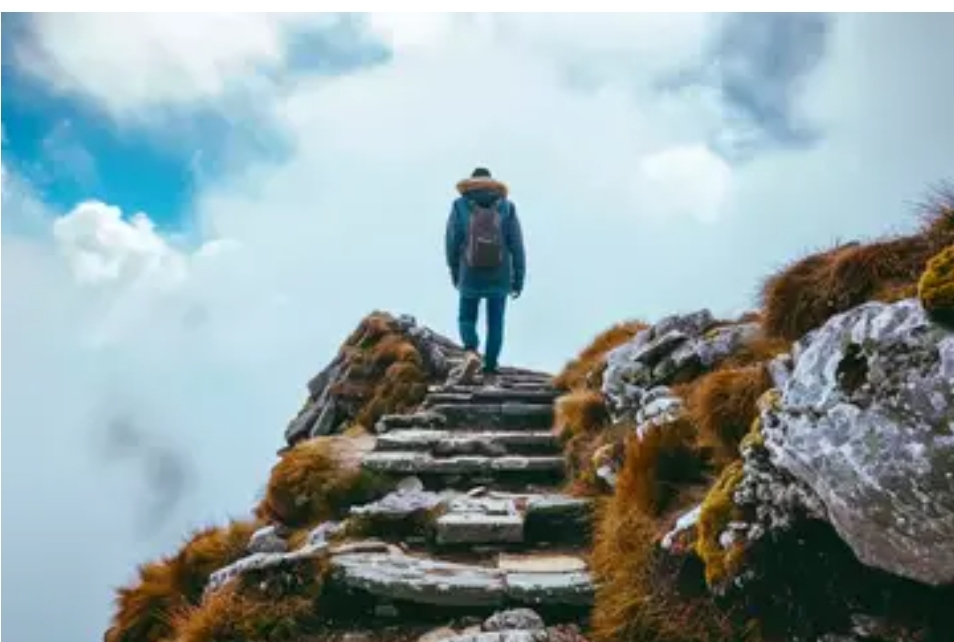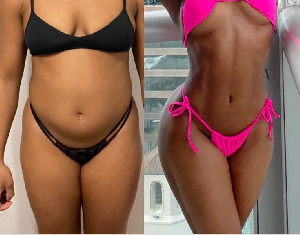Nine extraordinary tattoos from around the world
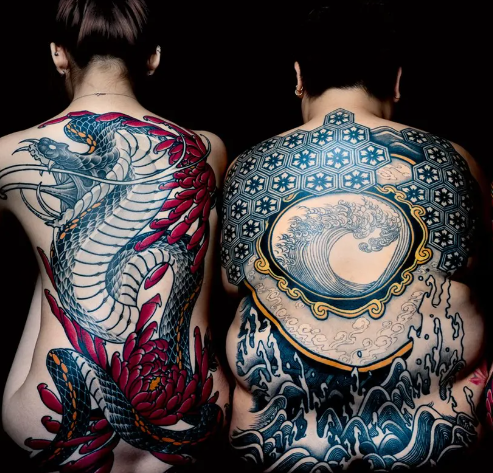
Tattoos have become the ultimate fashion statement. Barely a week goes by without an actor, pop star, sport star or model making headlines with new body art. Ink always starts a conversation, whether it’s British TV and radio presenter Maya Jama’s tiny new ankle tattoo, a spontaneous decision made in the fog of a hangover; or US rapper Chrisean Rock’s widely criticised face tattoo of her ex-boyfriend Blueface to protest against his incarceration.
Choosing a tattoo today is radically different from 20 years ago, with tattoo tourists now flocking to talented artists with huge online followings and celebrity endorsements. “The binders of flash sheets [drawings of tattoo designs] that were once discovered only by word-of-mouth recommendations in the waiting rooms of tattoo shops have found a new home on Instagram to be consumed by anyone around the world,” writes Alice Snape, editor of Things & Ink magazine, in a new book Tattoo You – A New Generation of Artists, published by Phaidon.
The book brings together 75 of the world’s most innovative tattoo artists, and launches just before the UK’s Brighton Tattoo Convention (24-25 February), a mecca for international tattoo talent. The book describes itself as “a celebration and a snapshot of a new generation of tattooing, showcasing diverse artists, styles and bodies”, and reveals a world where tattooing functions much like clothes, helping people “to feel at home in their own bodies”.
Today, designs are more varied, and often more detailed, as tools and tastes have evolved; and women, trans and non-binary artists of a range of cultures now take up space in what was once a predominantly white male profession. From reclaiming flesh scarred by surgery, to promoting the culture of marginalised groups, the tattoo artist of today responds to society’s evolving needs. As Snape writes in the book: “Tattooing is a way to hold power in a world that often feels like it is spiralling out of control.” Here are nine extraordinary changemakers:
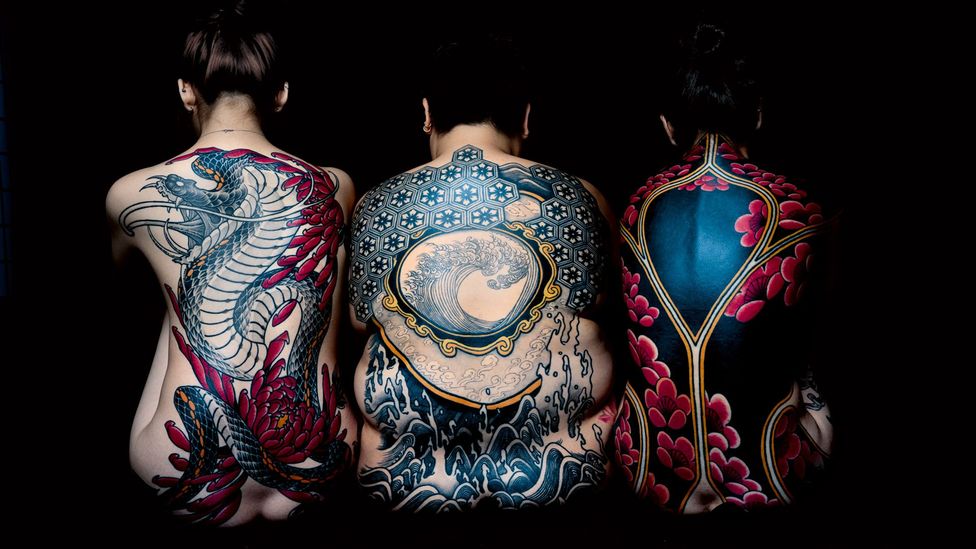
Singapore-based artist Ian Damien features traditional Japanese imagery in his work (Credit: Courtesy of artist)
1. Ian Damien
A tattoo should feel like “a warm hug”, says Singapore-based artist Ian Damien, who sees tattoo art as playing an important role in body positivity. His bold work flits between complex geometric designs and traditional Japanese imagery, and seeks, he says, to “preserve history”, as well as “create new, contemporary visual material”. Damien, whose aesthetic is influenced by the ornate Buddhist temples that his Chinese parents took him to, is just six years into his career, but his eye-popping style and empathetic approach have set him apart. “Tattooing can help a customer build a better relationship with their body,” he says in the book. “It can help make someone feel better and leave this world a better place… one clean line at a time.”
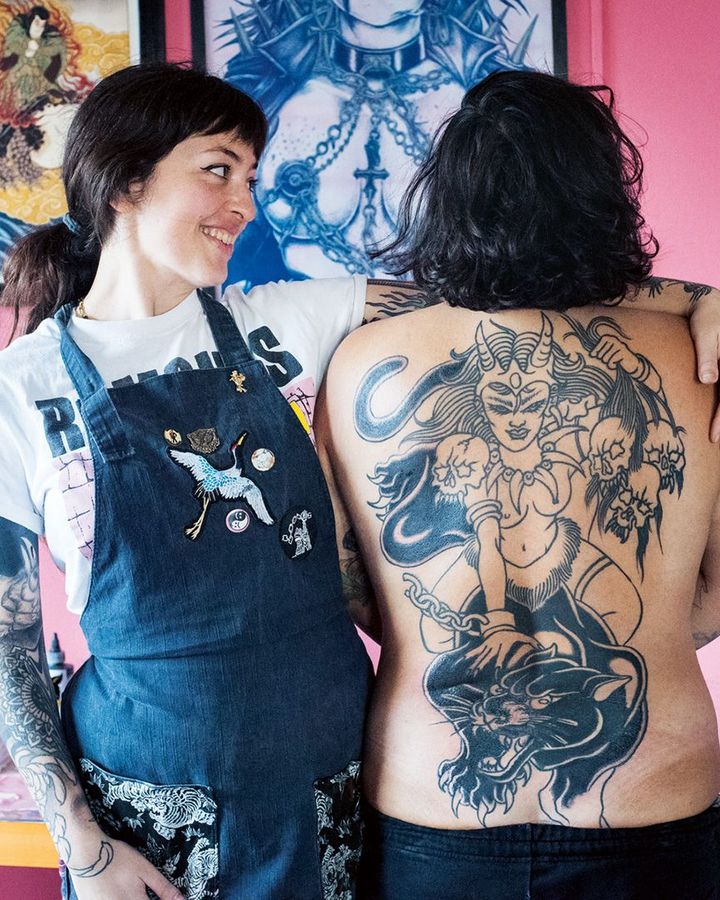
Argentinian body artist Yanina Alexandra is inspired by 80s imagery (Credit: Courtesy of artist)
2. Yanina Alexandra
“Getting a tattoo is a very intimate moment, where, historically, power dynamics have been abused by some male artists,” Argentinian Yanina “Yane” Alexandra tells BBC Culture. She estimates that only a fifth of Argentina’s tattoo artists are women, and believes that they play an important role in making the industry safer and more inclusive. Her designs, she says, are influenced by album covers, 80s leather culture, film and fashion, and move away from “the patriarchal mindset” that depicts women as “submissive and hypersexualised”. The women in Alexandra’s designs are “voluptuous with great hair”, she says, representing “power and abundance”. She adds: “I try to draw women that are strong, defiant, with agency over their own lives and actions”.
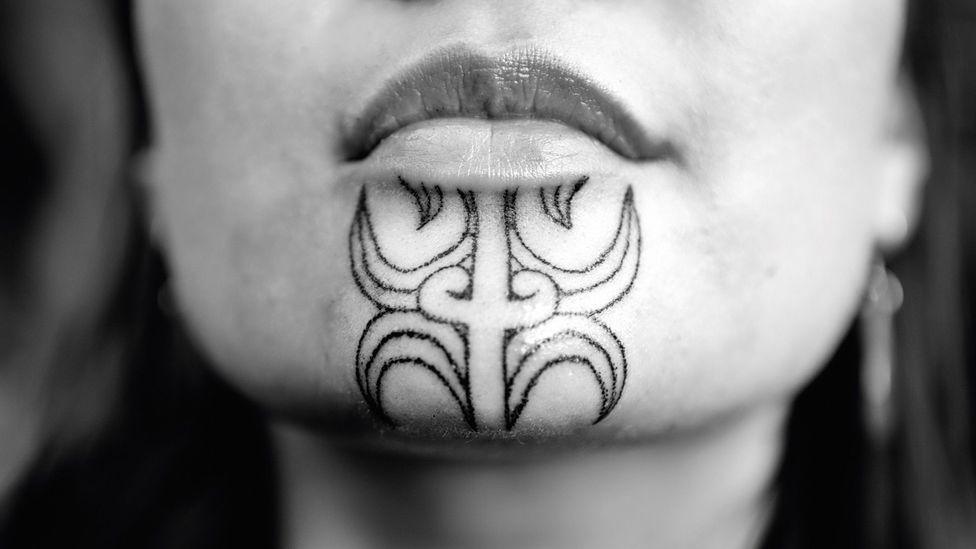
Auckland designer Moko Smith is strongly influenced by his Māori heritage (Credit: Courtesy of artist/ Vanessa Green)
3. Moko Smith
“Growing up I wanted to give back and help in my own way with the revival and strengthening of our people,” says Auckland-based artist Moko Smith, whose Māori heritage is central to his work. “And for me, the way I can do that is through this art form.” Smith works in a simple studio fashioned from two shipping containers and uses a bone comb and tapping stick to create traditional designs based on the sacred Māori practice of tā moko, the ritual receiving of body art as a rite of passage, as well as original concepts influenced by Māori crafts such as weaving and woodcarving.
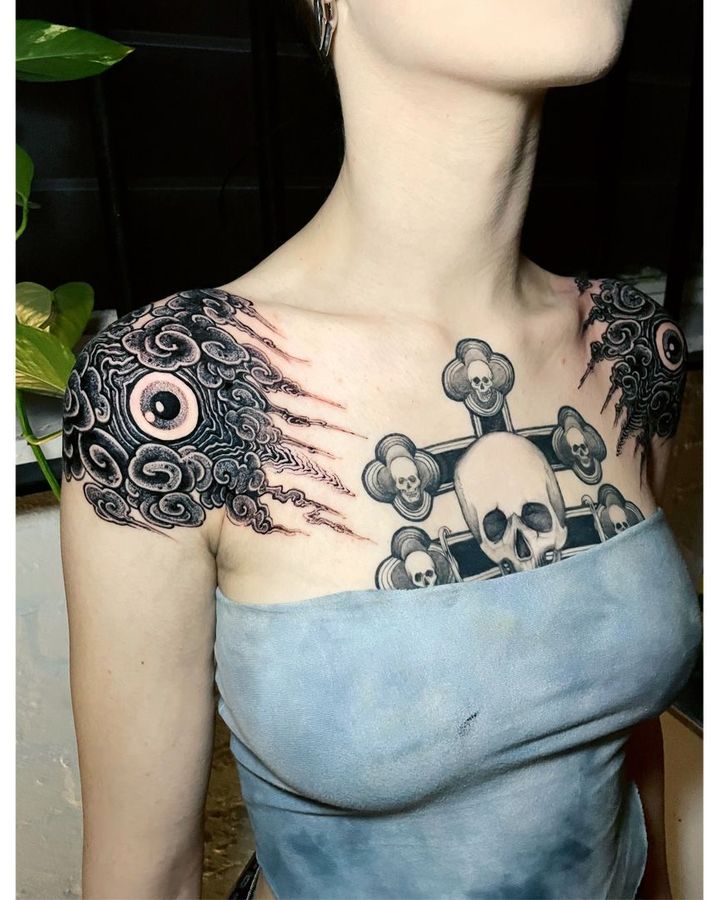
LA-based artist Ganji Bang brings Japanese mythological figures into his tattoos (Credit: Courtesy of artist)
4. Ganji Bang
By contrast, the tattoo art of Ganji Bang is about overturning traditions. Bringing his Japanese heritage to his workplace in Los Angeles, Bang confronts and subverts Japanese folklore by doing the unthinkable, and inking his clients with yōkai, ghastly supernatural monsters feared to inhabit the body if tattooed on to the skin. Mokumokuren, all-seeing eyes and portents of a yōkai infestation, are a repeated motif, staring out – often in multiples – from fearsome creatures, or stacked up in layers as part of a complex pattern. Bang’s customers include the US rapper Post Malone, who commissioned a Japanese wave design for his left temple in 2018.
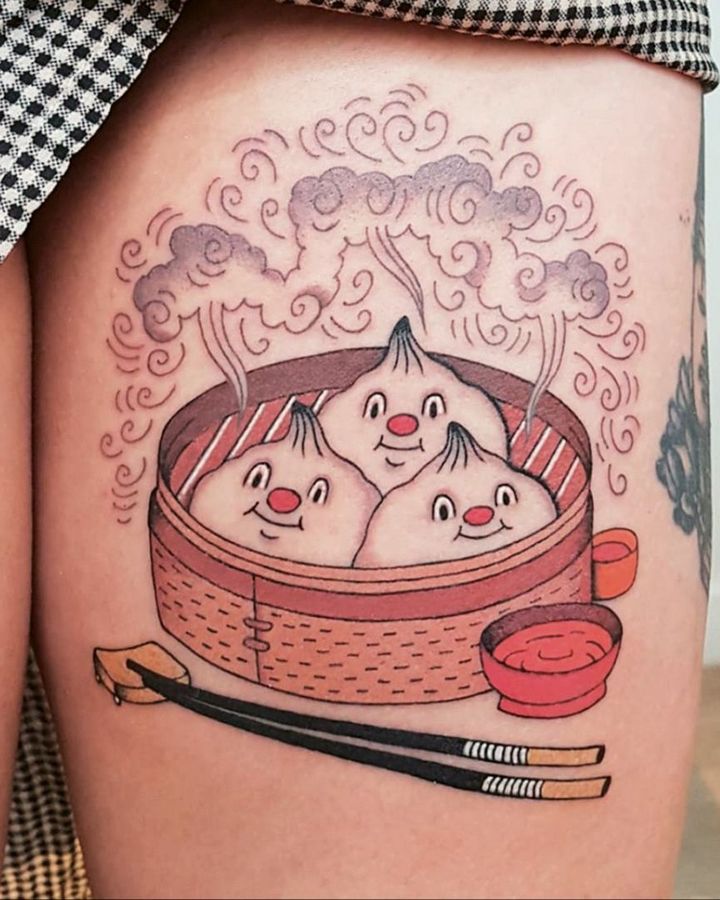
Food is the subject of the quirky designs by Barcelona artist Rion (Credit: Courtesy of artist)
5. Rion
Food is the surprising subject of many of the designs of Barcelona-based artist Rion. As a child growing up just outside Paris, she was an avid collector of Manga comic books, and the influence can be seen in her colourful tattoo work, which is cartoonish and cute but often has a sinister underbelly: chicken drumsticks sweat it out in a striped bucket, a dachshund is wedged into a hot dog bun, and dim sum peep over the edges of a bamboo steamer awaiting their fate. “My inspiration mainly comes from creepy vintage ceramics, vintage advertising illustrations, naïve store signs, vintage toys [and] a lot of music,” Rion tells BBC Culture. “My weird brain does the rest of the job.”
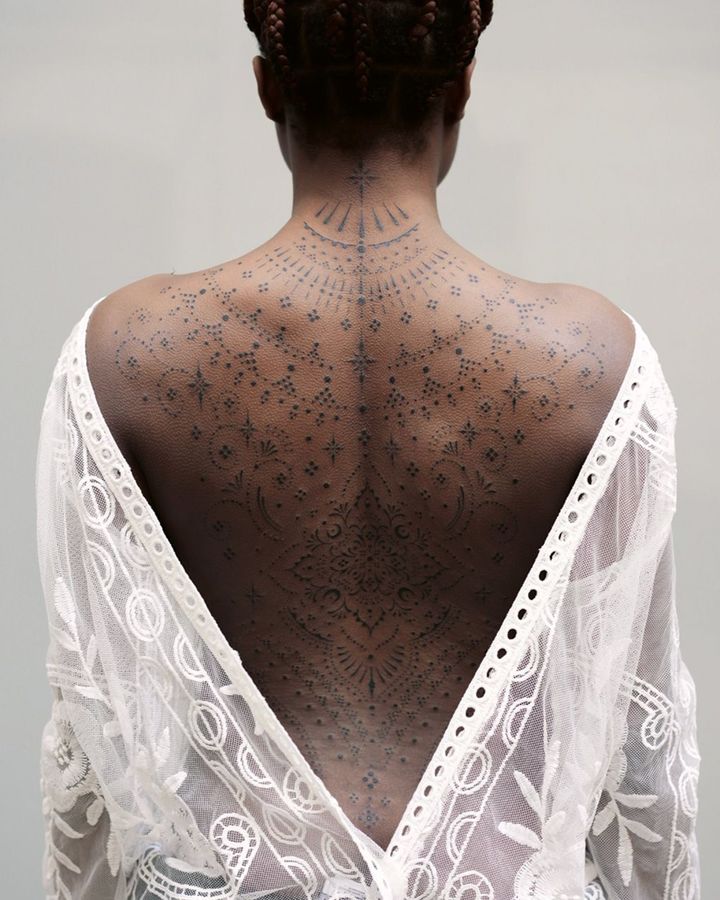
Paris-based designer Blum makes intricate, lace-like body art, including full bodysuits (Credit: Courtesy of artist)
6. Blum
Blum describes her delicate, lace-like body art as “permanent skin ornaments” that can “change bodies and their aspects”. Flowers, frescoes and ornamental architecture all feed her imagination, which converts the beauty of both the natural and built environment into intricate black designs that begin digitally on Procreate and result in a unique creation for each client. Blum also works as a model and has built up a following of more than 300k on Instagram, where flashes of her latest work sit alongside fashion photos of Blum with her tattooed full bodysuit.
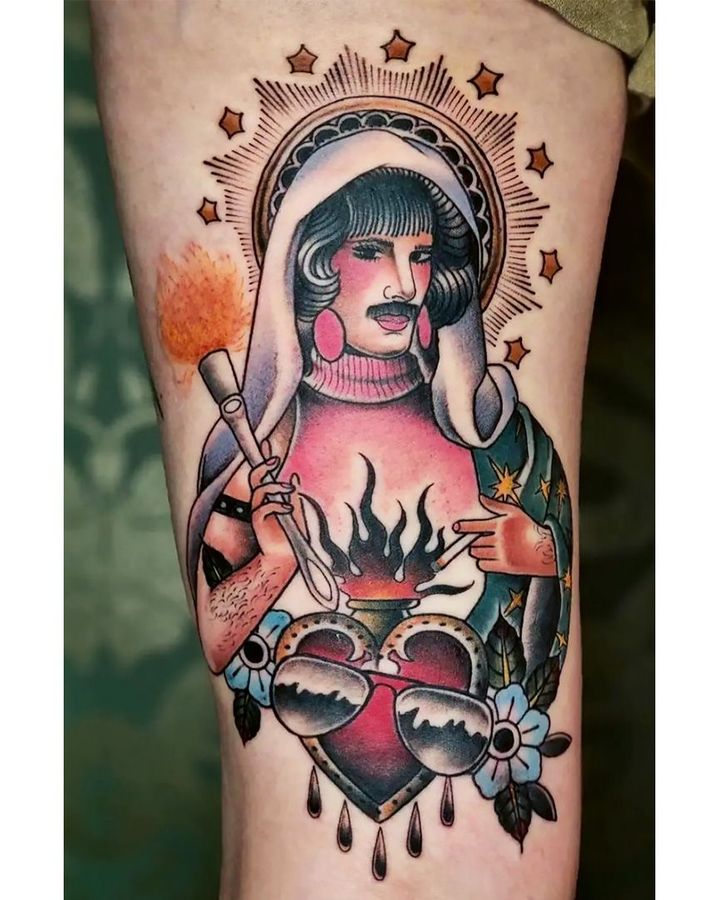
Jade F Clark creates designs that celebrate diversity and difference (Credit: Courtesy of artist)
7. Jade F Clar
“My tattoo practice aims to include all people,” Jade F Clark, originally from London, tells BBC Culture. “This is extremely important to me as a black female tattoo artist who doesn’t fit the norms of the tattoo world, and wants people to feel represented through my work.” Clark deliberately creates diverse designs that move away from the standard white male, able-bodied mainstream, which she describes as the “dominant culture in the Western world”. Colourful works such as cat lady reclaim stereotypes about women, while a Freddie Mercury tattoo inserts a gay icon in the place of a religious one.
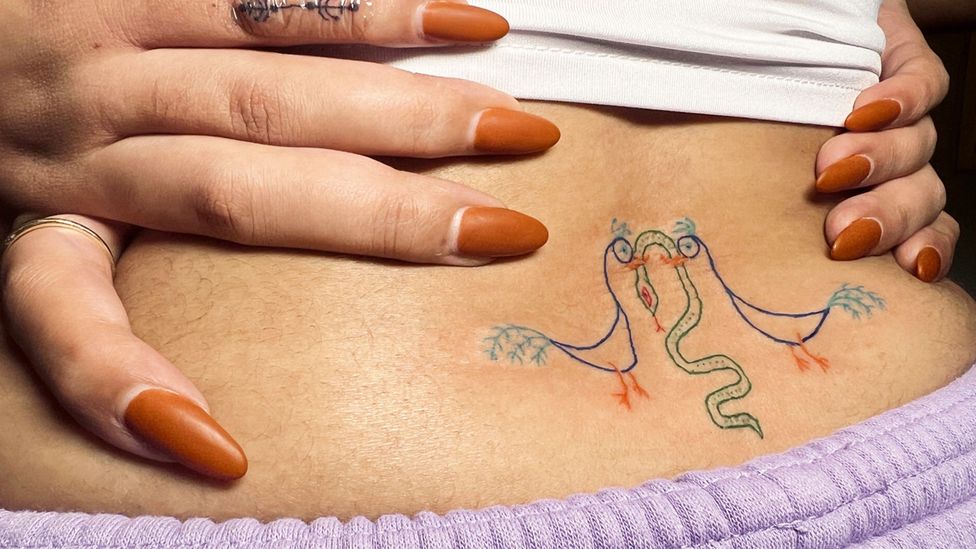
Janani Nathan of Chicago, Illinois is influenced by Indian folk art (Credit: Courtesy of artist/ T J Walker)
8. Janani Nathan
One way to make tattooing more inclusive is to invite under-represented groups to receive a tattoo for free. That is what non-binary Chicago artist Janani Nathan did in 2021 in order to attract more South Asian clients and in so doing build a community of people with a common heritage. Nathan’s delicate designs draw on Indian folk art and are mostly produced with the traditional hand-poking technique, which they feel creates a more intimate bond between client and artist. Nathan learnt much of their trade at Chicago’s My Place Tattoo and Art Studio, described in the book as “a trauma-informed space for queer people of colour to tattoo and get tattooed”. Creating welcoming spaces for marginalised sectors of society has been central to how Nathan is helping to reshape the tattoo industry.
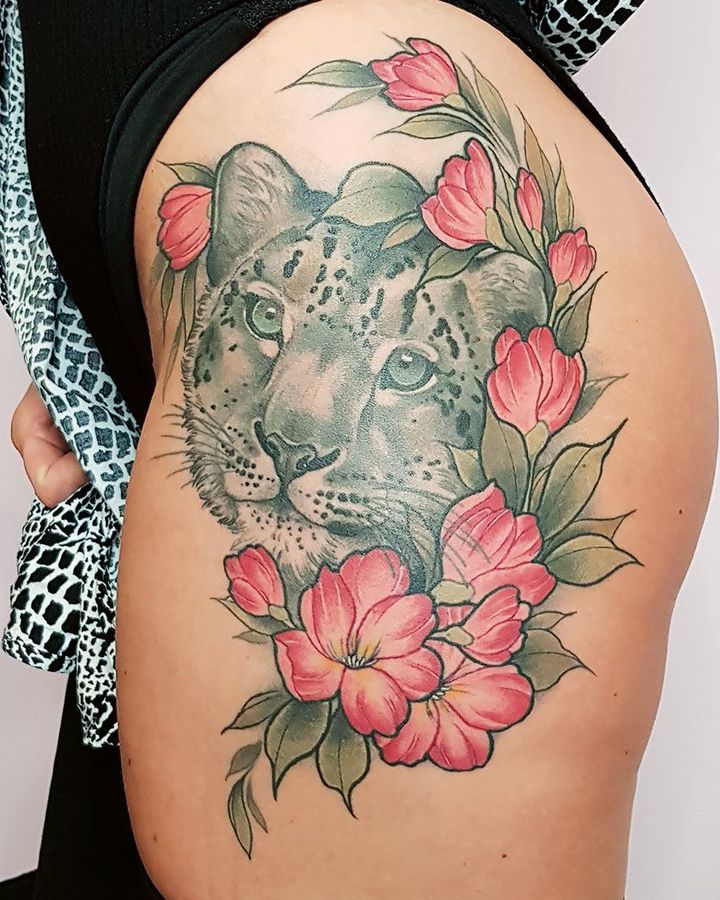
Tanya Buxton specialises in cosmetic work, such as the embellishment of scars (Credit: Courtesy of artist)
9. Tanya Buxton
Sometimes tattoos are about fitting in rather than standing out. British artist Tanya Buxton specialises in cosmetic work, embellishing scars and creating realistic nipple tattoos for people who have had mastectomies or top surgery. For these clients, being tattooed has a huge impact both physically and mentally, she tells BBC Culture. “You’re taking control again, you’re reclaiming yourself. For a lot of people, it is a celebration of life, it’s marking a new chapter in their journey now, a way of moving forward.” Tanya’s work is helping to dispel stereotypes about tattooing and who it is for. “I think everyone should know what tattooing is capable of and how it’s evolved,” she says. “It can be a really life-changing, powerful thing.”
Tattoo You – A New Generation of Artists is published by Phaidon.
Source: BBC

